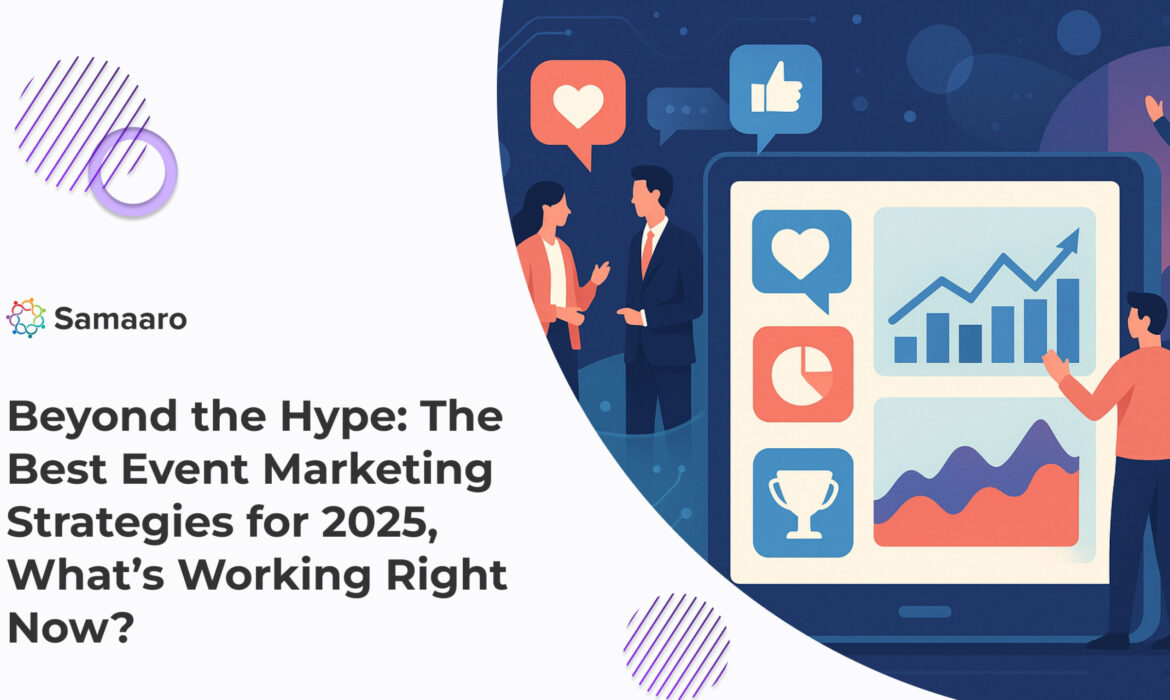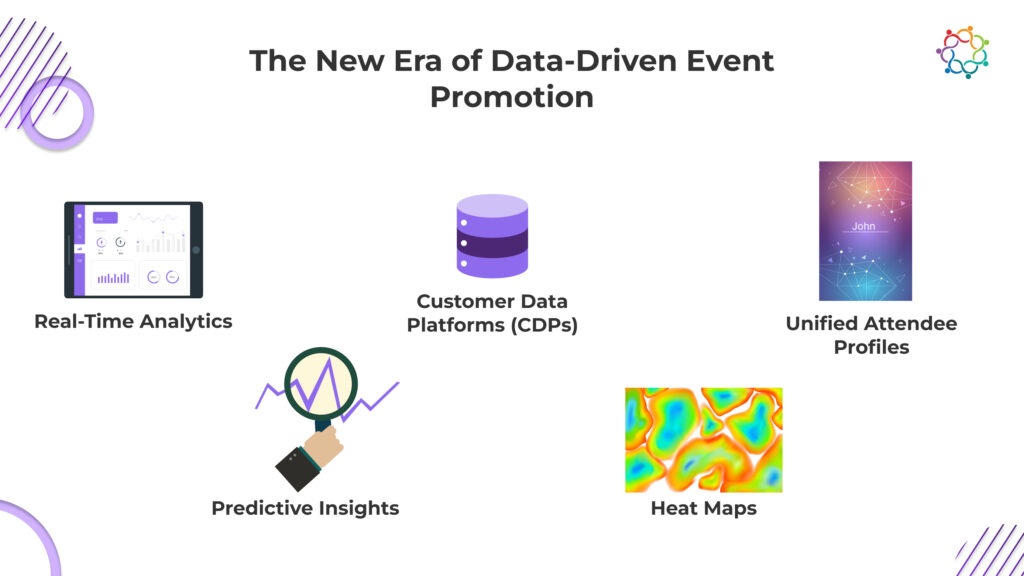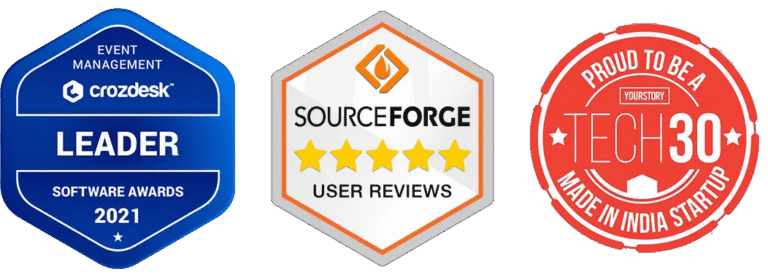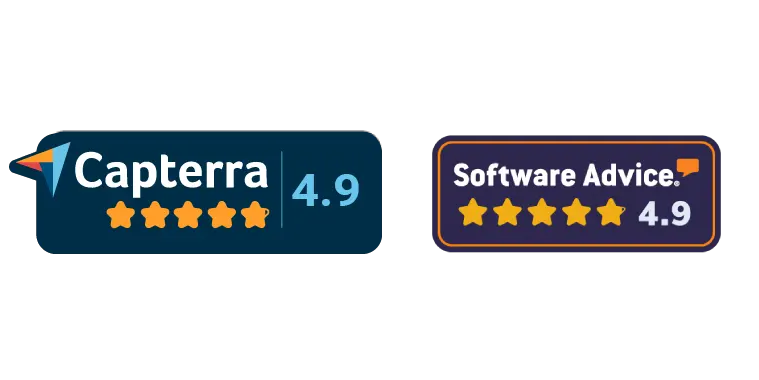Samaaro + Your CRM: Zero Integration Fee for Annual Sign-Ups Until 30 June, 2025
- 00Days
- 00Hrs
- 00Min

The event industry is moving faster than ever. What worked just one or two years ago might already be an afterthought by 2025. Between AI, hyper-personalization, and hybrid event models, marketers can no longer make a living off outdated event promotion methods. If marketers want to see success, they’ll need to cut through the noise by employing strategies that are based on real data, emerging technologies, and audience-first thinking.
In this blog, we look at the most impactful event marketing strategies you’ll need to be aware of in 2025. You’ll learn everything from data-driven event marketing and retargeting best practices to the most practical examples of AI in event marketing and more. You’ll learn practical tools to make the most out of your spending, provide truly awesome attendee experiences, and maximize ROI. Whether you’re doing large-scale conference promotion or virtual event marketing strategies, or small B2B gatherings, you’ll be able to leverage the content in this blog.

No longer are event marketers dependent on only instincts, good feelings, or even vanity metrics like registrants, in 2025, effective marketing strategies incorporate real-time data, predictive analytics, and insight at a company-wide level.
Modern event platforms provide much more than just a report on registrations. Marketers can now determine how many clicks happened in-platform, how many actually attended sessions, how much content was engaged with, and can even see heat maps of attendee behavior when various kinds of events are implemented.
Predictive analytics provided marketers with great insights so they can predict attendance rates, alongside which sessions they may expect to have more attendees show up. When considering attendee engagement, predictive analytics can alert marketers to possible attendee churn risks to allow them to affect programmatic or marketing changes before a problem occurs.
Customer Data Platforms (CDPs) have become a great asset, since through one-ever increasing source of truth for every attendee through the collating of data from CRMs, social media feeds, event apps, and websites, segmentation and personalization become much more effective.

2025 demands more than simple segmentation. With unified data, marketers can create highly individualized attendee journeys, recommending sessions, networking opportunities, and relevant content based on user profiles and real-time behavior.
With dynamic content delivery, email messages, event websites, and apps can dynamically adjust based on the user’s areas of interest. If a registrant shows interest in a keynote speaker, for instance, they may receive their own notifications, articles related to this keynote speaker, and further exclusive meet and greet opportunity messaging.
ROI is no longer just about leads. In 2025, event success is equally measured by Return on Relationships (ROR) tracking attendee satisfaction, brand loyalty, and long-term community engagement.
In 2025, event marketing no longer operates in isolated silos. Today’s buyers and attendees interact with multiple touchpoints before making decisions, from clicking a social ad, attending a webinar, visiting a sponsor booth, reading a blog post, engaging with emails, to finally registering or converting post-event. Traditional attribution models that only credit the “last click” fail to capture the complexity of this journey.
Multi-touch attribution offers a much broader perspective. You can assign value to every significant touch that plays a part in the attendee’s decision and acknowledge that many marketing efforts, across channels and over time, work together cumulatively.
For instance, if a prospect first learned about the event through a LinkedIn post, saw an email follow-up, then encountered remarketing ads – and then ultimately registered the event after a personal invitation, you can credit the entire process!
In 2025, event marketers can fully endorse multi-touch attribution to gain unparalleled transparency and clarity around the true effectiveness of their work. With clarity and transparency comes the ability to allocate budgets effectively, personalize audiences purposefully, and have the marketing, sales, and event operations teams on the same page as they connect to drive conversions (in the short term) and loyalty (in the long term).

Retargeting remains one of the most effective tools in an event marketer’s toolkit, but in 2025, it’s smarter, more segmented, and more omnichannel than ever.
Today’s event marketers segment audiences into much smaller, highly granular audiences instead of embarking on broad retargeting lists. They target visitors who abandoned the registration process, past attendees who have not yet registered for the current year, prospects who viewed only specific speaker profiles, and pricing pages, and even attendees that engaged with only certain sessions or sponsors during a previous event. Marketers can automate retargeting as event registration was triggered with respect to specific behaviors. An example is downloading an event brochure or displaying interest by clicking on pricing information without completing a registration.
AI enables highly customized retargeting ads:
The best event marketing will be occurring in 2025. It will use multiple channels at the same time to let prospects engage with the event wherever they are in the attendee journey. Email retargeting serves these people by sending abandoned registration emails or sending personalized follow-up content based on the user’s previous actions. Social media retargeting accomplishes the same thing using sophisticated advertising tools like Facebook Custom Audiences and LinkedIn Matched Audiences to serve a very hot group of interested followers.
You will continue to see video retargeting as marketers use inviting short videos through ads on platforms like YouTube, TikTok and Instagram Reels to grab people’s attention and spur action. A final retargeting strategy called sequential retargeting, offers a deliberate order/series of ads that tell a story, or build excitement and urgency for marketing events based on the progression leading up to the day of the event. Each interaction will push the prospect closer to registered attendees, and consequently engagement in the future.
With so much personalization, it’s critical to prevent ad fatigue. Frequency capping ensures prospects aren’t bombarded, keeping engagement high and maintaining positive brand sentiment.

AI is no longer a future concept in event promotion, it’s now a daily tool for leading marketers.
Marketers use AI for first-pass drafts of:
AI models trained on brand tone ensure messaging stays consistent across channels.
AI also supports rapid A/B testing by generating multiple variations of copy, allowing marketers to quickly identify which versions resonate with different audience segments.
With AI, marketers can personalize at scale:
Today, marketers are employing a variety of Large Language Models (LLMs), like ChatGPT and Jasper for brainstorming and content creation, as well as summarizing text. As for design, AI tools like Canva AI and Adobe’s AI capabilities enable marketers to develop banners, social images, and presentation slides for events quickly and effectively. When it comes to video, AI-generated promotional videos are possible using avatars, autogenerated scripts, and speech synthesis that can drastically improve the efficiency of the entire production process.

While AI accelerates content creation, human oversight is irreplaceable for creativity, empathy, and strategic alignment. Ethical considerations around data use, bias, and authenticity also require careful governance.
The event marketing strategies that will dominate 2025 and beyond are clear:
But while technology is advancing rapidly, the heart of every successful event remains unchanged: meaningful human connection.
In 2025, event marketing is no longer rule-based, but rather agile, innovative, and precise. The ability of marketers to utilize real-time, predictive data enables them to glean event attendee behavior and adjust their modelling accordingly. AI is developing new levels of personalization and unique relevance for individuals, while omnichannel retargeting keeps the conversation happening on all platforms and devices. Hybrid formats are a mainstay, combining the broader reach of virtual with the intimacy of human interaction in face-to-face or in-person events.
But amid all this, one thing does not change: meaningful human connection is at the heart of a successful event.
Technology is the enabler, but memorable experiences, impactful interactions, and genuine community building are the true drivers of sustained success.
Event marketers who can balance between new technology and the focuses of attendee experience will be able to deliver measurable ROI, cultivate loyalty, and continue to deliver powerful and memorable experiences, so whether you’re experimenting with AI-driven content or refining your retargeting campaigns, it’s important to lean on insights that go beyond hype. This detailed guide on event marketing in 2025 offers a realistic look at what strategies are delivering ROI this year.

Built for modern marketing teams, Samaaro’s AI-powered event-tech platform helps you run events more efficiently, reduce manual work, engage attendees, capture qualified leads and gain real-time visibility into your events’ performance.


© 2025 — Samaaro. All Rights Reserved.